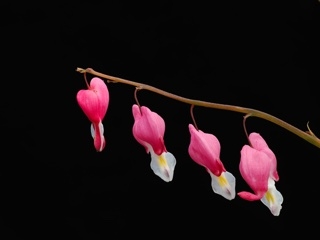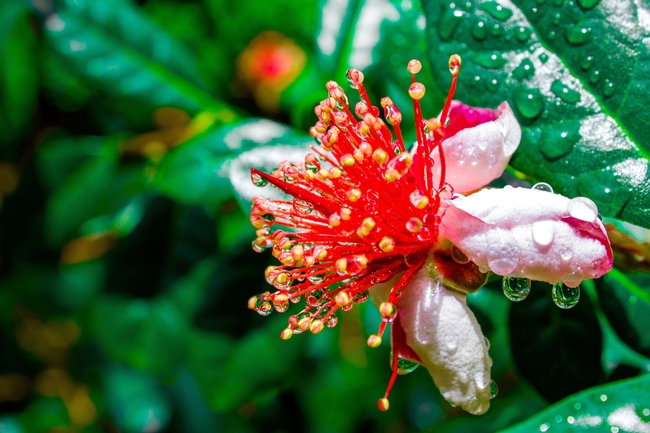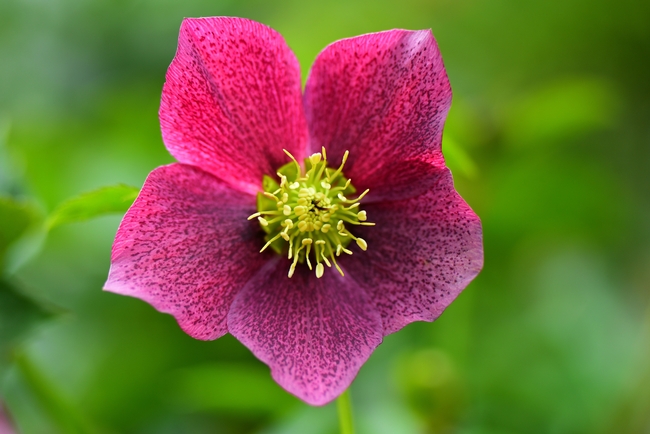“My garden is cursed! All I have is shade and nothing will grow,” wailed the neighbor. Living as we do in “Sunny California,” it may seem downright unfair but almost every garden has some shady spots, and they are often the most troublesome to deal with. And, as buildings get taller and are built closer together, shaded areas are more common and dreams of having verdant outdoor spaces, native plants and pollinators may seem out of reach. But don't despair--gardening successfully in shaded areas requires more planning and proper plant selection but the results are well worth it.
A Few Benefits of Shade
-More water efficiency: shade gardens dry more slowly so plants need less water overall.
-Lower maintenance: plants in shaded areas grow more slowly and therefore require less pruning and deadheading.
-Less fertilizer: because they grow more slowly, shade-loving plants require less frequent applications of fertilizer. A layer of compost and a topping of mulch may be all that's needed.
-Fewer weeds: what we think of as unwanted vegetation usually prefers sunny growing conditions.
-Another reason to lose the lawn: traditional lawn grasses don't usually do well in low light areas. There are plenty of shade-loving ground covers that fill the need for low-growing greenery.
-Full shade: these are places that receive little to no direct sunlight throughout the day. Typical locations for these darker areas are on north-facing sides of a structure, in areas bordered by tall buildings, trees and fences, or spots that are covered by roof overhangs.
-Part shade: locations where sunlight is blocked for a portion of the day by buildings, walls, large trees or natural terrain. As the sun moves from east to west, the light changes as the day progresses. Areas that receive morning light may be shaded in the afternoon and vice versa. In general, east-facing areas that receive morning sun and become shadier in the afternoon are better suited to shade-loving plants. Western facing areas are more likely to receive hot afternoon sun are not suitable and will result in damaged foliage and heat-stressed plants.
Light terminology
--Full Sun: 6 or more hours of direct sun per day.
--Part Sun: 4 to 6 hours of direct sun, shaded during the most intense sunlight periods/later in the day.
--Part Shade: 4 to 6 hours of sun, preferably morning, shaded the remainder of the day.
--Dappled Sun: A mix of sun and shade throughout the day.
--Full Shade: All plants must have some light but plants that prefer full shade should receive 2 hours or less of direct sun, preferably in the morning.
Under Trees: To Plant or Not?
NOTE: Extreme caution should be exercised before planting anything near a California Live Oak (Quercus latifolia). The roots of these trees are extremely sensitive and even a small amount of added moisture or disturbance can wreak havoc.
Once you have a good fix on the conditions in your location, have fun exploring different options for creating lovely shaded outdoor spaces. In addition to the classics like azaleas, hydrangeas and fuchsias there's a huge variety of plants to choose from.
For shade-loving plants native to the Half Moon Bay area and to find planning tools, go to:
and likelihood of success, visit the UC Davis Arboretum All Stars Plant Database at:
https://arboretum.ucdavis.edu/plant-database
Any questions? Contact the Master Gardener Helpline:
-----------------------------------
Maggie Mah is a UC Master Gardener who has a growing appreciation for shade.
Bleeding Heart” (Dicentra spectabilis), a shade-loving perennial




